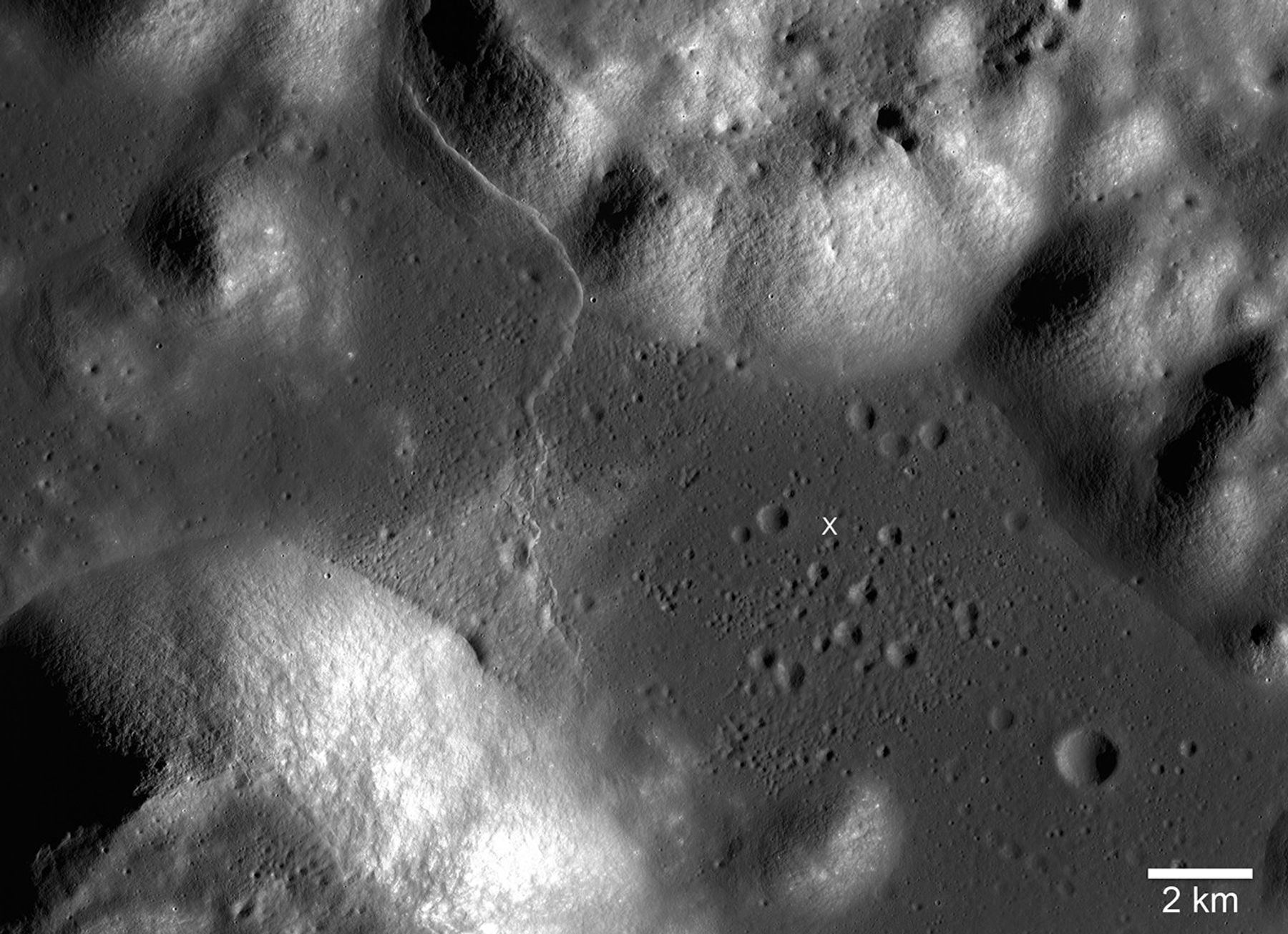This mosaic of the Taurus-Littrow valley was made using images from the Narrow Angle Cameras onboard NASA’s Lunar Reconnaissance Orbiter. The orbiter has been circling and studying the Moon since 2009. The ancient-lava-filled valley is cut by the Lee-Lincoln thrust fault, visible as a sinuous, white line extending from South Massif (mountain in the bottom left corner) to North Massif (mountain in the top center) where the fault abruptly changes direction and cuts along the slope of North Massif. The Lee-Lincoln fault has been the source of multiple strong moonquakes causing landslides and boulder falls on both North and South massifs. The approximate location of the Apollo 17 landing site is indicated to the right of the fault with a white “x”.
NASA/ASU/Smithsonian
As NASA prepares to send astronauts to the surface of the Moon’s south polar region for the first time ever during the Artemis III mission, scientists are working on methods to determine the frequency of moonquakes along active faults there.
Faults are cracks in the Moon’s crust that indicate that the Moon is slowly shrinking as its interior cools over time. The contraction from shrinking causes the faults to move suddenly, which generates quakes. Between 1969 and 1977, a network of seismometers deployed by Apollo astronauts on the Moon’s surface recorded thousands of vibrations from moonquakes.
Moonquakes are rare, with the most powerful ones, about magnitude 5.0, occurring near the surface. These types of quakes are much weaker than powerful quakes on Earth (magnitude 7.0 or higher), posing little risk to astronauts during a mission lasting just a few days. But their effects on longer-term lunar surface assets could be significant. Unlike an earthquake that lasts for tens of seconds to minutes, a moonquake can last for hours, enough time to damage or tip over structures, destabilize launch vehicles on the surface, or interrupt surface operations.
“The hazard probability goes way up depending on how close your infrastructure is to an active fault,” said Thomas Watters, senior scientist emeritus at the Smithsonian’s National Air & Space Museum in Washington.
Watters is a long-time researcher of lunar geology and a co-investigator on NASA’s LRO (Lunar Reconnaissance Orbiter) camera. Recently, he and Nicholas Schmerr, a planetary seismologist at the University of Maryland in College Park, developed a new method for estimating the magnitude of seismic shaking by analyzing evidence of dislodged boulders and landslides in an area, as the scientists reported on July 30 in the journal Science Advances. Studies like these can help NASA plan lunar surface assets in safer locations.
